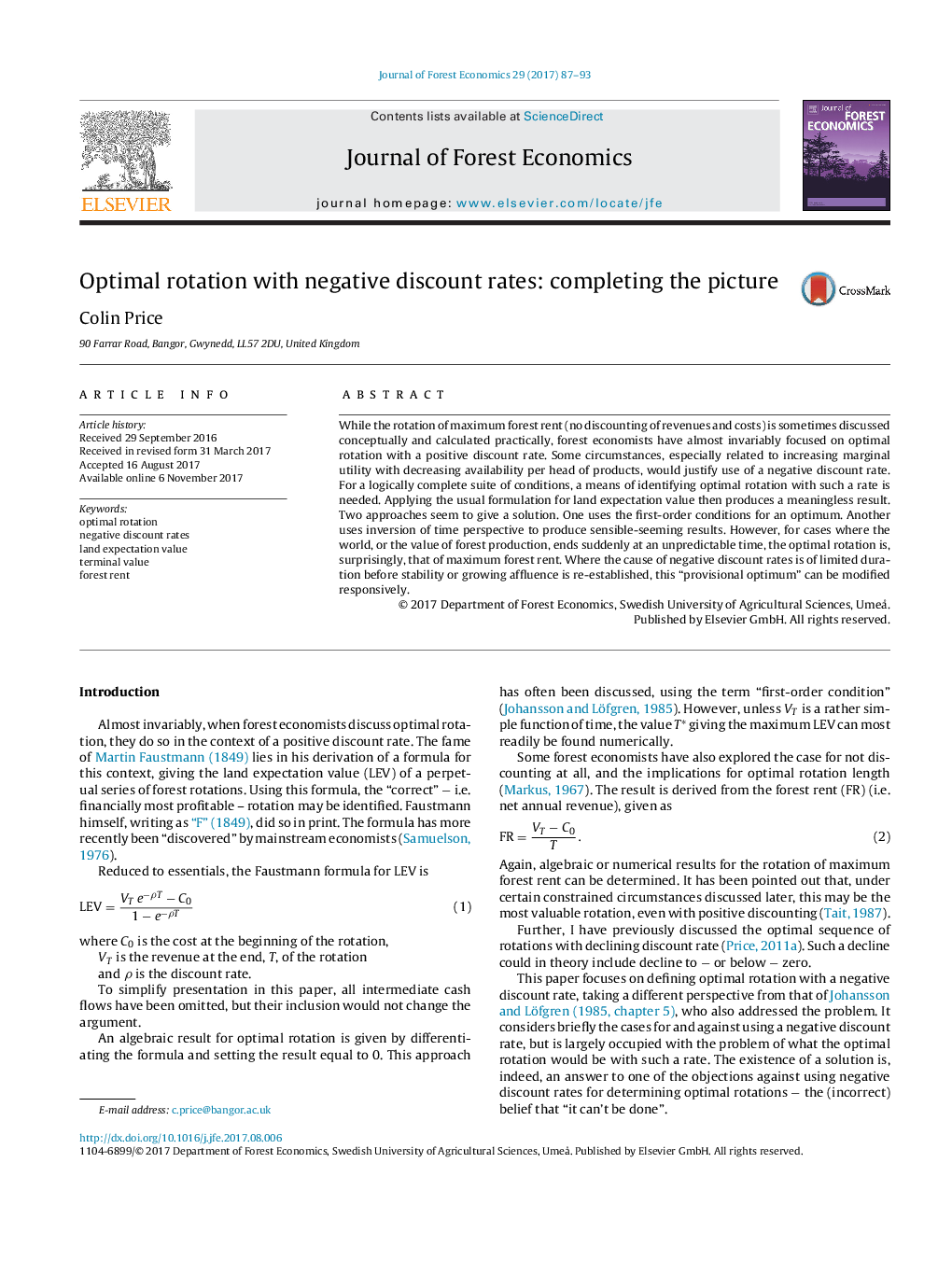| Article ID | Journal | Published Year | Pages | File Type |
|---|---|---|---|---|
| 6545141 | Journal of Forest Economics | 2017 | 7 Pages |
Abstract
While the rotation of maximum forest rent (no discounting of revenues and costs) is sometimes discussed conceptually and calculated practically, forest economists have almost invariably focused on optimal rotation with a positive discount rate. Some circumstances, especially related to increasing marginal utility with decreasing availability per head of products, would justify use of a negative discount rate. For a logically complete suite of conditions, a means of identifying optimal rotation with such a rate is needed. Applying the usual formulation for land expectation value then produces a meaningless result. Two approaches seem to give a solution. One uses the first-order conditions for an optimum. Another uses inversion of time perspective to produce sensible-seeming results. However, for cases where the world, or the value of forest production, ends suddenly at an unpredictable time, the optimal rotation is, surprisingly, that of maximum forest rent. Where the cause of negative discount rates is of limited duration before stability or growing affluence is re-established, this “provisional optimum” can be modified responsively.
Related Topics
Life Sciences
Agricultural and Biological Sciences
Agronomy and Crop Science
Authors
Colin Price,
